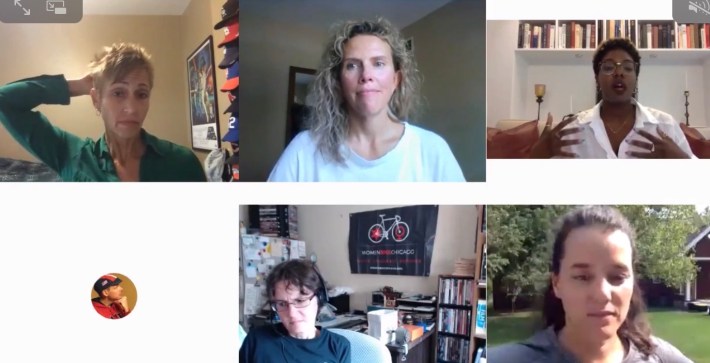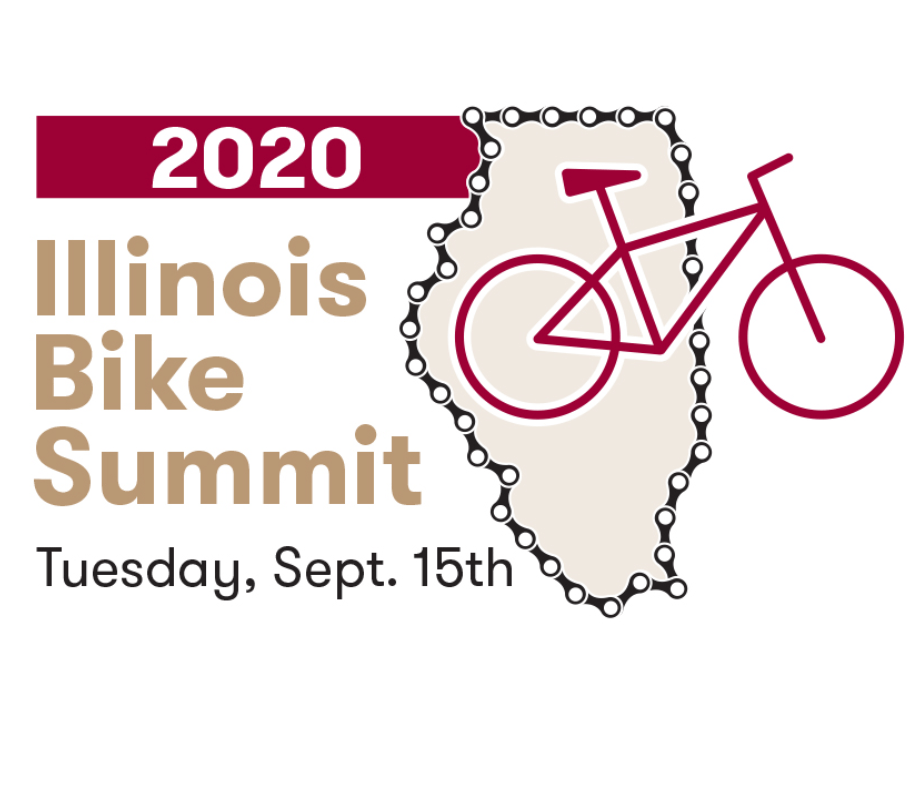Last week I woke up early for the virtual Illinois Bike Summit, hosted by the statewide advocacy organization Ride Illinois. I was looking forward to attending the breakout session on Diversity, Equity, and Inclusion and a session on e-bikes. My plan was to write about the Diversity, Equity, and Inclusion session and attend the e-bike session out of my own personal interest. Unfortunately, at the end of the summit, I was left a little disappointed by the content. While I want you, the reader, to know that I appreciate the work Ride Illinois is doing, I want to share my honest thoughts about the event.
The Diversity, Equity, and Inclusion session started off with Elizabeth Adamczyk of Women Bike Chicago and the Chicago Ride of Silence. I would have appreciated a short explainer as to why diversity, equity, and inclusion matters in the world of cycling. I appreciated Elizabeth bringing up the gender gap in cycling, the fact that men account for the majority of folks riding on the streets in Chicago, and in other U.S. cities. But I would have liked to have heard her say why this is: Women don’t feel safe on the streets.
Elizabeth and fellow presenter Caryn Davis, owner of downstate Bloomington Cycle & Fitness, spoke of their women-only rides that helped boost the confidence of female participants. I definitely appreciate that group rides help make new riders more confident, but if you’ve read some of my previous articles on Streetsblog, you’d know that I feel strongly about the need for protected bike lanes, traffic calming, and removing police from traffic enforcement. In an ideal world, the built environment and law enforcement practices would create safety for all people on bikes, regardless of their demographic, no one would need “confidence” to hop on a bike, whether for recreation or transportation.

Also, ironically, the Diversity, Equity, and Inclusion panel wasn't particularly diverse. I appreciated that Shawnee Day, an after-school instructor with West Town Bikes who's African-American, participated, sharing her experience of being welcomed into the fold at the Humboldt Park-based youth bike education center. But I would have preferred to see more people of color, as well as cyclists with disabilities, share their experiences of biking and what they’d like to see done to make our streets safer for them.
And there were no real recommendations from the panel on ways to promote the training, hiring, and promotion of people of color within the cycling industry. Given the discussions surrounding racial inclusion and equity I’ve had the privilege of attending, and the special attention paid to systemic racism in the issue of Bicycling magazine guest edited by mobility justice leader Tamika Butler, this discussion left me wanting more.
At the end of my time at the Illinois Bike Summit, I was left wondering what it would take to get a more diverse crowd involved in these conversations and in advocacy efforts. We need a real commitment to actively involve Black and Brown cyclists, disabled riders, queer and transgender cyclists, women cyclists, and cyclists with children. I know our advocacy priorities and our built environment would look a lot different if these folks were leading the conversation.
Follow Courtney Cobbs on Twitter at @CourtneyCyclez.





